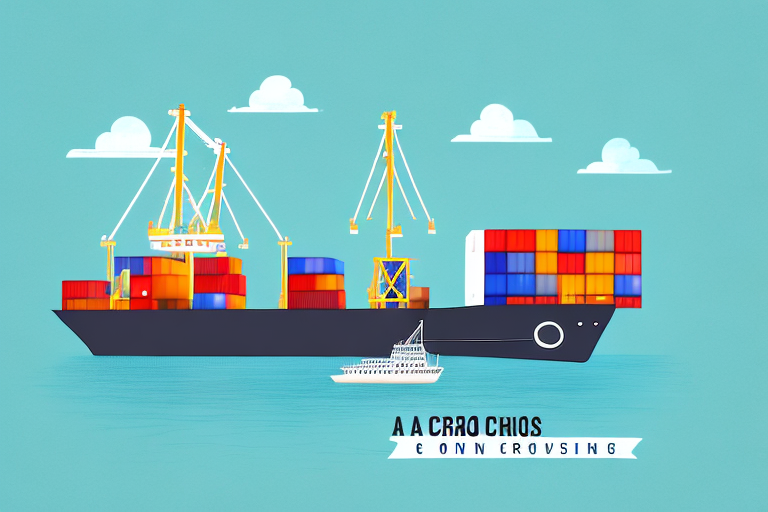What Does GRI Stand For in Shipping?
The General Rate Increase (GRI) is a pivotal mechanism in the shipping industry, designed to balance supply and demand for shipping services. GRIs involve shipping companies adjusting their freight rates in response to market or industry conditions. This article delves into the definition, history, significance, impact, calculation methods, common misconceptions, role, examples, and future trends of GRI in the shipping sector.
Understanding the Definition and Purpose of GRI in Shipping
General Rate Increase (GRI) refers to the practice of carriers raising their shipping rates to accommodate fluctuating business costs. Key factors influencing GRI include:
- Fuel Costs: Fuel is a significant expense for shipping companies, and fluctuations directly impact operating costs.
- Labor Costs: Wages and benefits for crew and port workers can affect overall expenses.
- Maintenance Costs: Regular upkeep of vessels ensures safety and operational efficiency.
- Port Fees: Charges for terminal handling, freight forwarding, and customs clearance activities.
Implementing a GRI allows carriers to maintain profitability by offsetting these variable costs. It's important to note that GRIs are not uniformly applied across all routes or carriers. The timing and frequency of GRI announcements can vary, necessitating that shippers and freight forwarders stay informed to mitigate unexpected costs.
The History of GRI in the Shipping Industry
The concept of GRI has been integral to the shipping industry since the advent of containerization in the 1960s. Initially, GRIs were straightforward, applying a flat percentage rate across all routes irrespective of demand or popularity. However, with the industry's evolution, GRIs have become more nuanced, factoring in regional demand, seasonal variations, and global supply chain dynamics.
Modern GRIs offer carriers greater flexibility to respond to market changes. For instance, a sudden surge in demand for a specific shipping route allows carriers to adjust pricing promptly, enhancing industry efficiency and competitiveness. This adaptive approach ensures that carriers can better serve their customers while maintaining operational viability.
Importance of GRI for Shippers and Carriers
GRI plays a critical role in balancing supply and demand within the shipping industry. For carriers, it ensures that they can cover rising operational costs and sustain profitability. For shippers, understanding GRI enables effective cost management and strategic planning, as rate adjustments can influence the overall cost of goods and services.
Additionally, GRIs contribute to the sustainability of the shipping industry by encouraging efficient operations and reducing the carbon footprint. By incentivizing carriers to adopt eco-friendly practices, GRIs support a more sustainable supply chain. Shippers also benefit by selecting carriers committed to environmental responsibility, fostering a collaborative effort towards sustainability.
The Impact of GRI on Freight Rates and Pricing
The influence of GRI on freight rates and pricing is multifaceted, contingent on factors such as vessel utilization, fuel prices, and market demand. In scenarios where GRI leads to increased freight rates, smaller companies may face challenges in maintaining competitiveness. Conversely, GRIs can promote competitive pricing structures in previously underserved or remote areas.
Market competition significantly affects the impact of GRI. In highly competitive trade lanes with multiple carriers, the effect of a GRI may be mitigated as carriers strive to absorb costs to retain market share. In contrast, in trade lanes dominated by few carriers, GRIs can result in substantial price hikes due to limited competition.
According to a report by BIMCO, fuel prices alone accounted for approximately 30% of the total operating costs in shipping logistics in 2023, highlighting the substantial role biofuel price fluctuations play in GRI implementations.
Calculating and Applying GRI in Shipping Contracts
Determining a fair and effective GRI involves a comprehensive analysis of various factors, including regional supply and demand, vessel types, and seasonal variations. The calculation process typically involves:
- Data Analysis: Assessing historical data on shipping volumes, routes, and cost fluctuations.
- Cost Assessment: Evaluating current and projected operational costs such as fuel, labor, and maintenance.
- Market Conditions: Considering the competitive landscape and demand trends.
Shipping companies often have specialized departments dedicated to GRI calculations, collaborating closely with clients to design pricing structures that are equitable and sustainable for all parties involved. Utilizing advanced analytics and real-time data can enhance the accuracy and responsiveness of GRI applications.
Common Misconceptions about GRI in Shipping
There are several misconceptions surrounding GRI:
GRI as Unjustified Price Increases
One common misconception is that GRIs allow carriers to arbitrarily raise prices without justification. In reality, GRIs are carefully calculated based on actual cost increases and market conditions, ensuring that rate adjustments are warranted and transparent.
GRI Benefits Carriers Exclusively
Another misconception is that GRIs solely benefit carriers at the expense of shippers. However, GRIs provide a predictable pricing mechanism that benefits both parties. While carriers can sustain profitability, shippers gain clarity and can plan their logistics budgets more effectively.
The Role of GRI in Global Trade and Supply Chain Management
GRI is integral to the efficiency and effectiveness of global trade and supply chain management. By enabling carriers to adjust rates in response to market dynamics, GRIs facilitate the creation of optimized transportation networks. This adaptability supports business growth and expansion by ensuring reliable and cost-effective shipping solutions.
Furthermore, GRIs contribute to sustainability within global supply chains. Adhering to GRI standards allows companies to operate responsibly, reducing environmental impact and enhancing their reputation among consumers and stakeholders.
According to the United Nations Conference on Trade and Development (UNCTAD), sustainable shipping practices driven by GRI can lead to a significant reduction in global emissions, aligning with international environmental goals.
Examples of Successful Implementation of GRI in Shipping
GRI has been successfully implemented in various shipping projects, enhancing efficiency and sustainability:
Container Systems Deployment
The adoption of container systems revolutionized global shipping by reducing costs and improving delivery times. GRIs played a crucial role in managing the costs associated with this transition, facilitating widespread adoption and significant industry expansion.
Digital Technologies for Vessel Optimization
Shipping companies have leveraged digital technologies to optimize vessel performance and reduce fuel consumption. By utilizing GRI to track and report fuel usage, companies can implement measures to enhance efficiency and lower emissions. The adoption of alternative fuels like liquefied natural gas (LNG) and biofuels, supported by GRI frameworks, has been instrumental in promoting sustainable shipping practices.
For more insights on sustainable shipping practices, refer to the International Chamber of Shipping.
Future Trends and Developments in GRI for Shipping Companies
The future of GRI is poised to evolve with technological advancements and changing market dynamics. Key trends include:
Big Data Analytics
Utilizing big data analytics allows carriers to optimize pricing and capacity utilization by analyzing historical shipping data. This leads to more informed decision-making, efficient resource use, and increased profitability.
Digital Platforms and Marketplaces
The rise of digital platforms facilitates real-time GRI negotiations and transactions between carriers and shippers. These platforms enhance transparency, reduce negotiation time and costs, and promote more efficient pricing structures.
According to a study by McKinsey & Company, digital transformation in shipping could reduce operational costs by up to 20% through enhanced efficiency and data-driven decision-making.
In conclusion, the General Rate Increase (GRI) remains a fundamental aspect of the shipping industry, enabling carriers to balance supply and demand while ensuring profitability. For shippers, understanding GRI is essential for effective cost management and strategic planning. As the industry continues to advance, GRIs will evolve, incorporating new technologies and sustainable practices to drive the shipping sector forward.






















